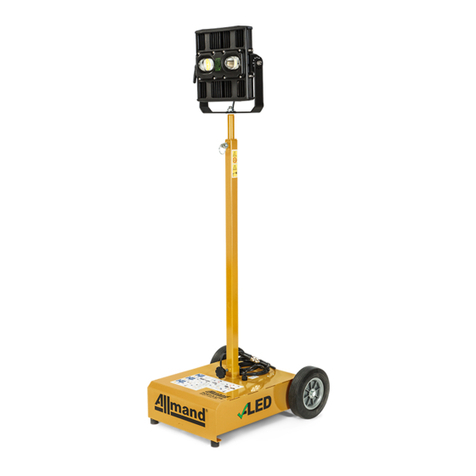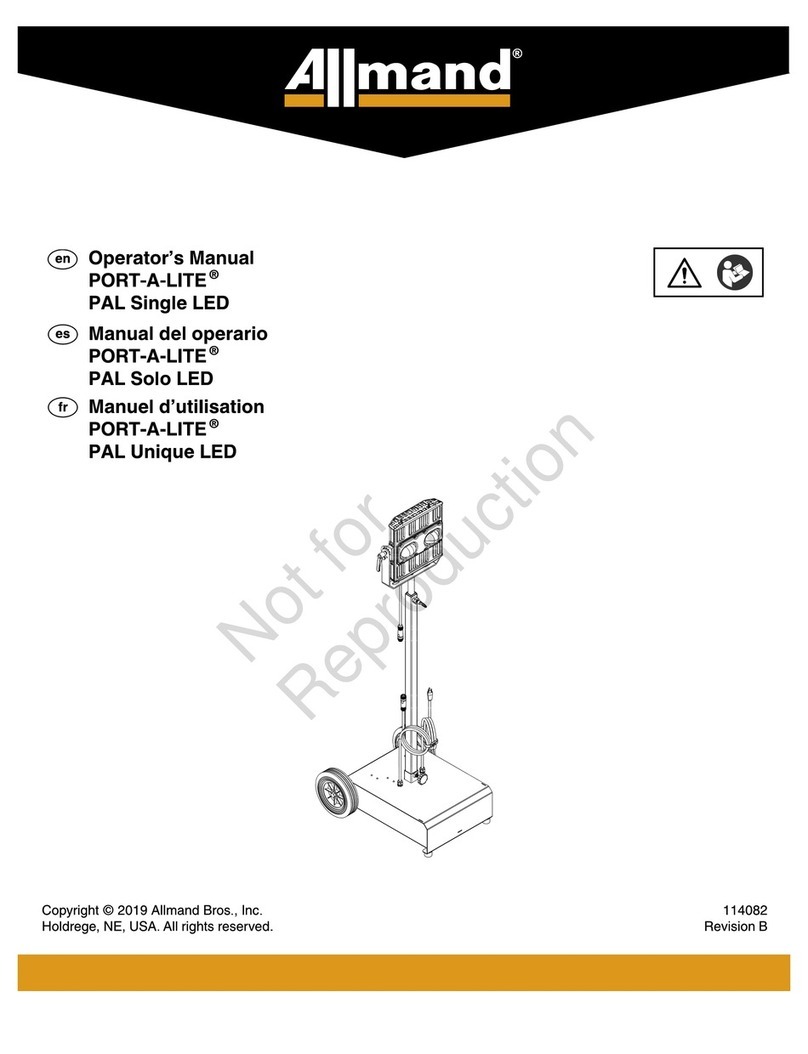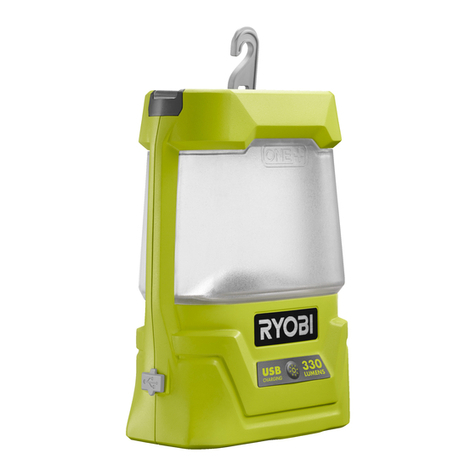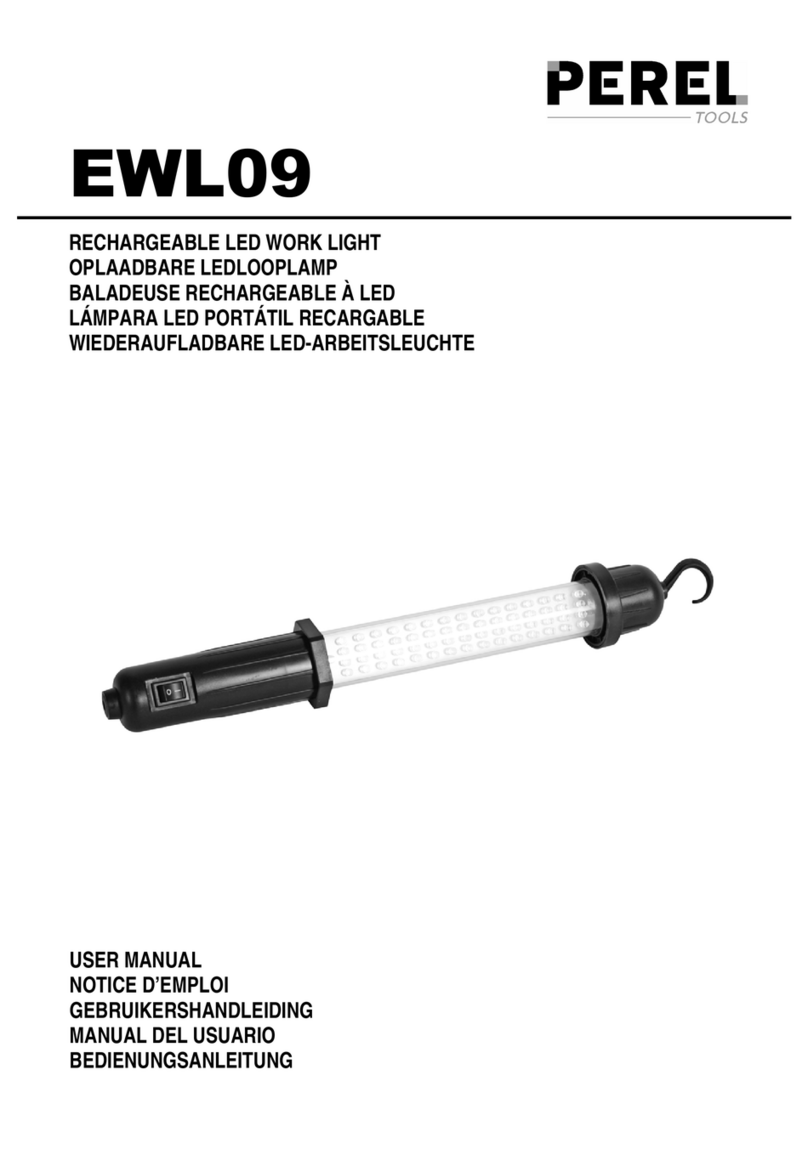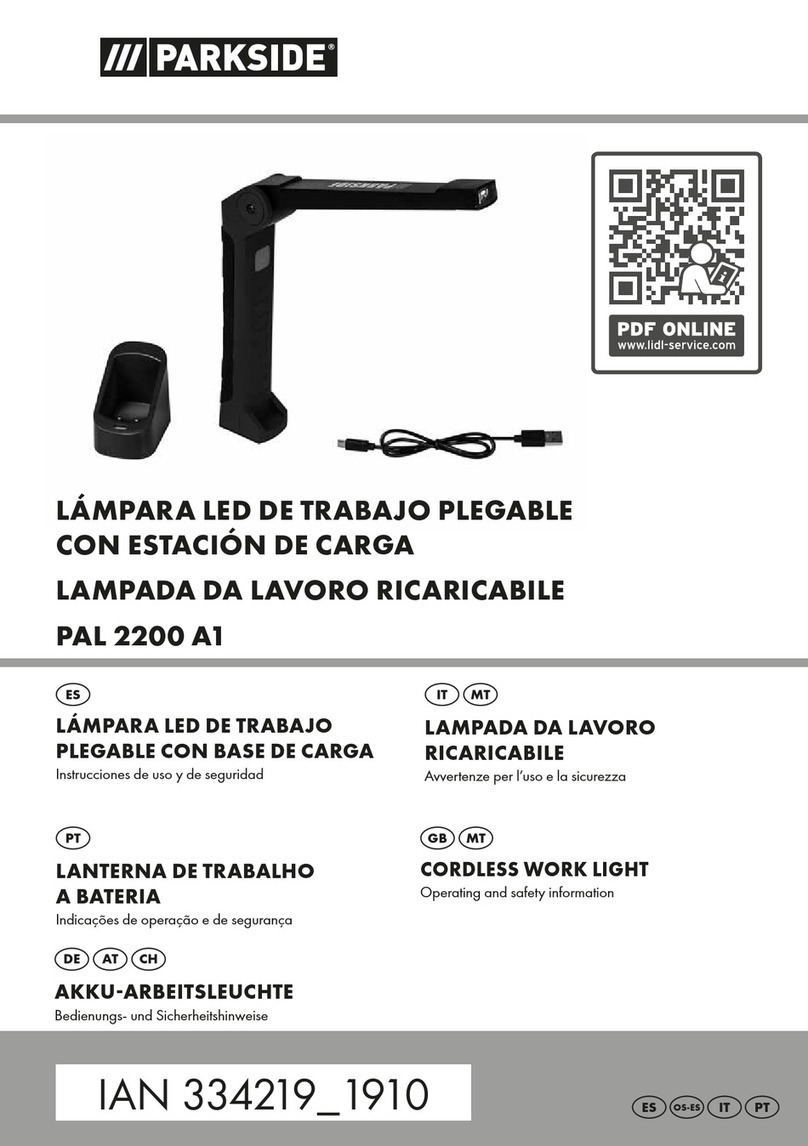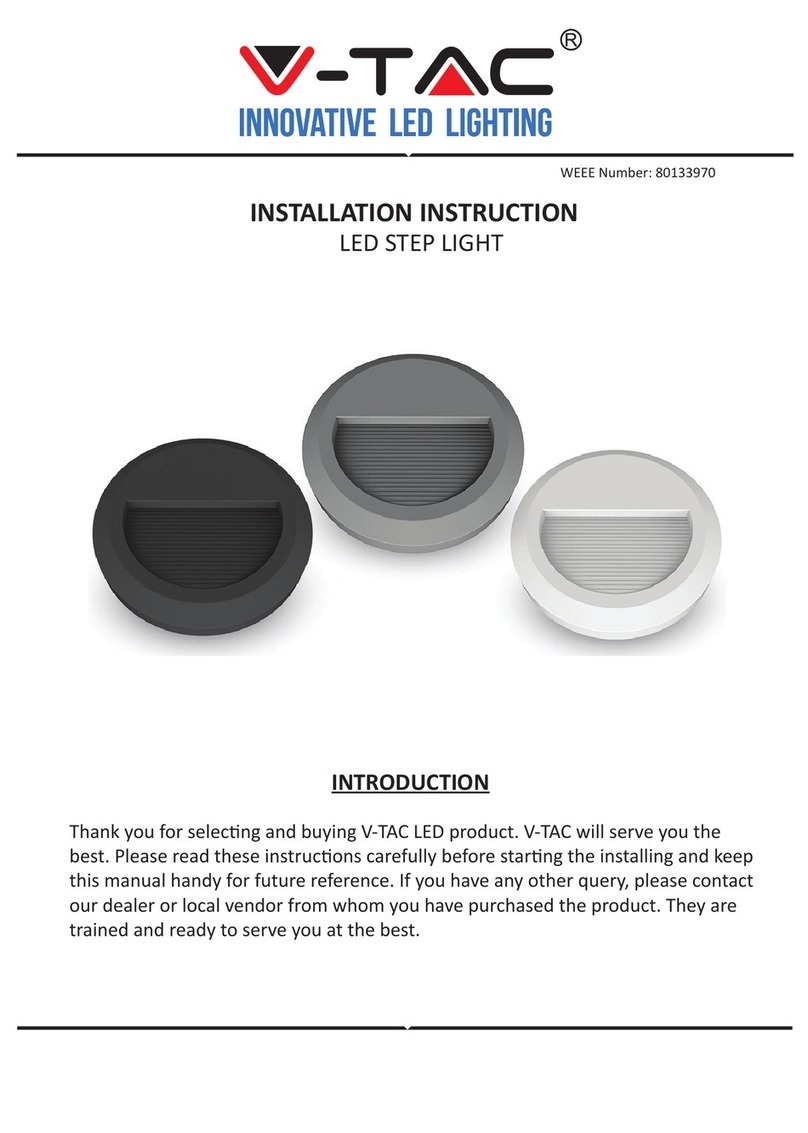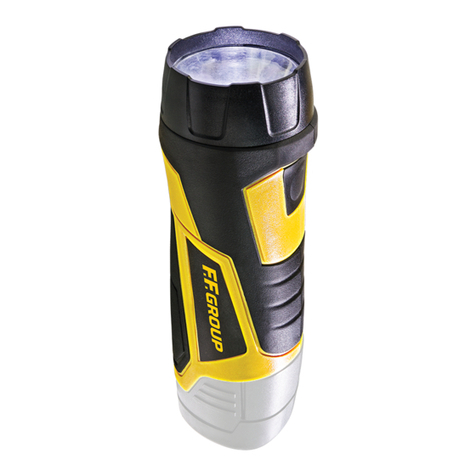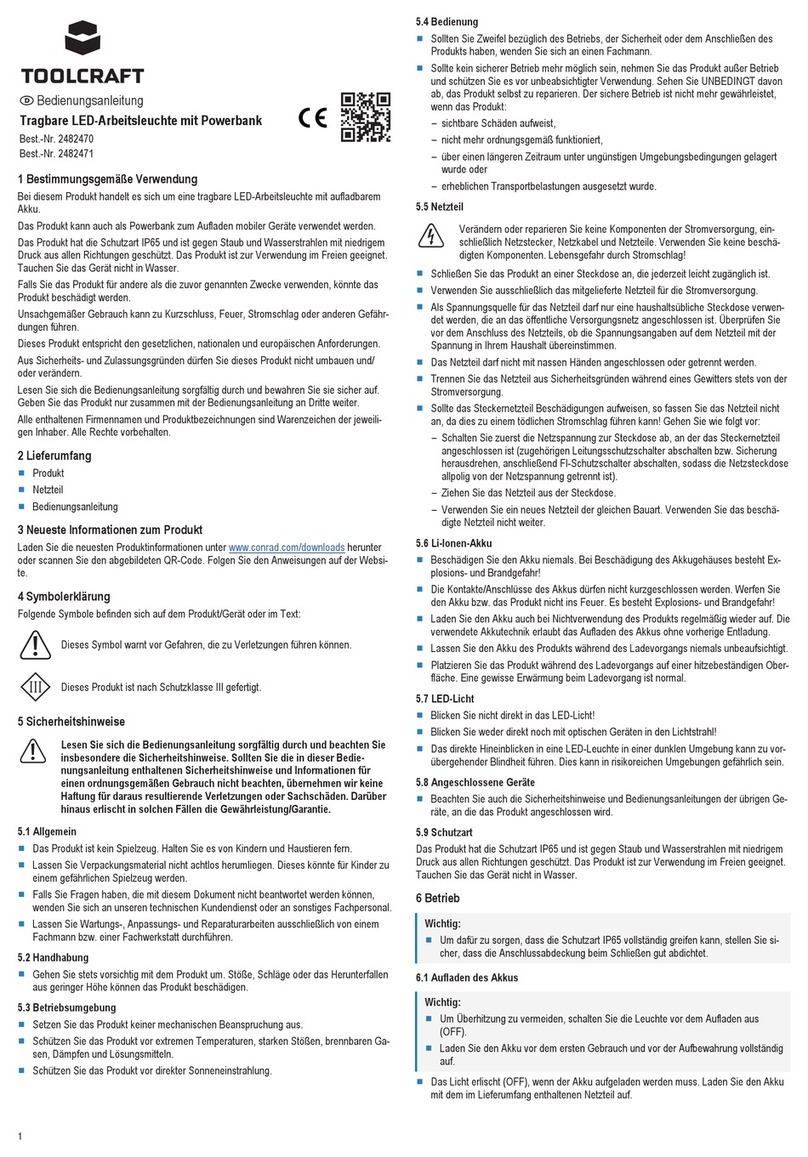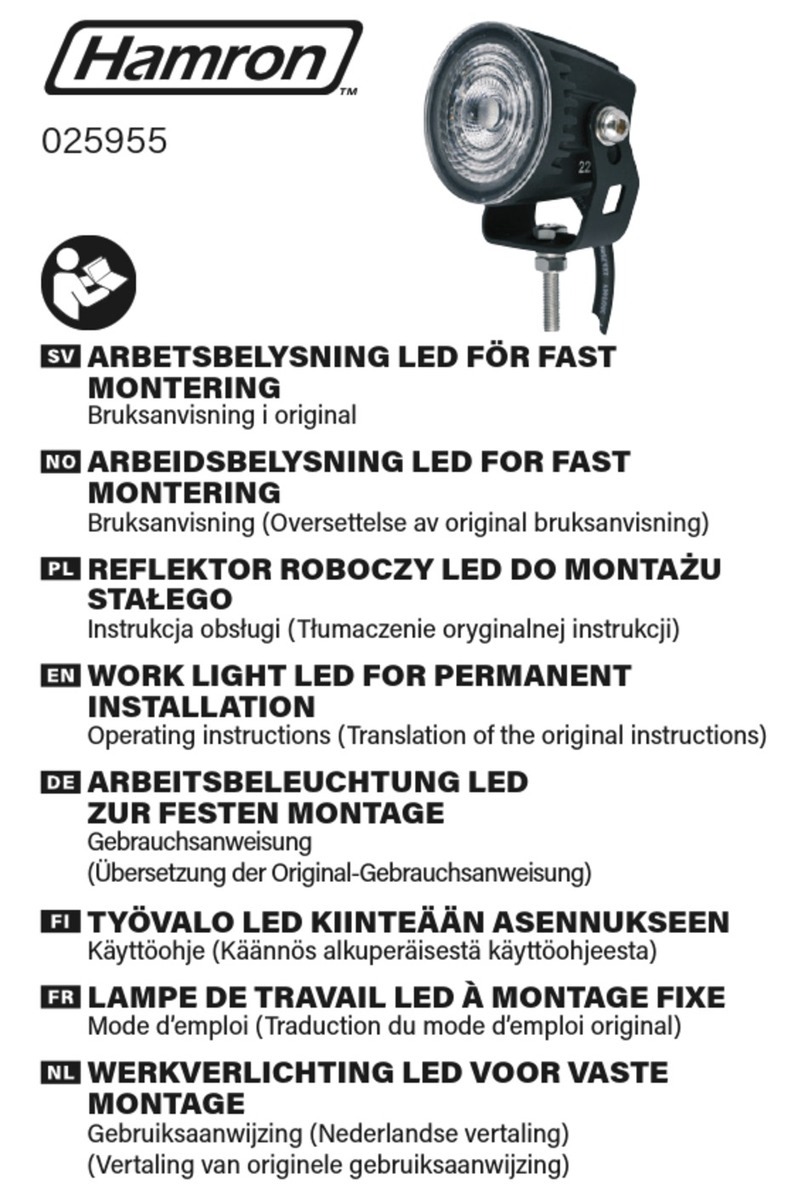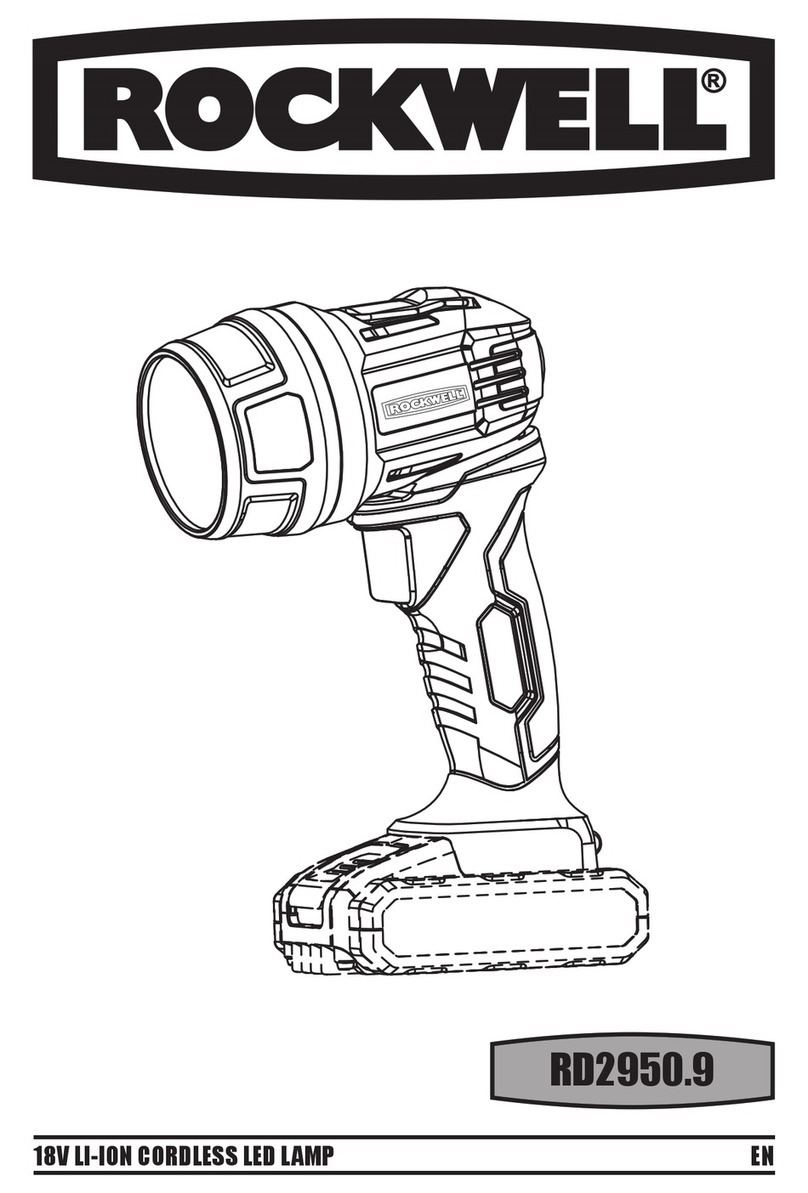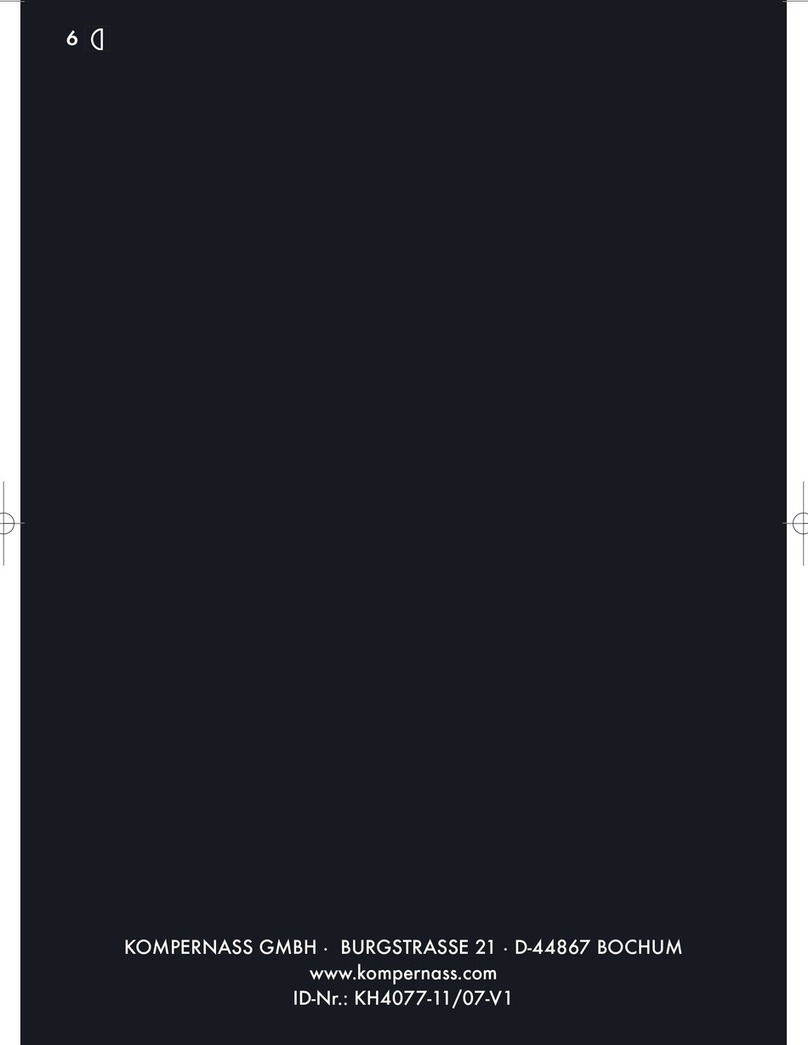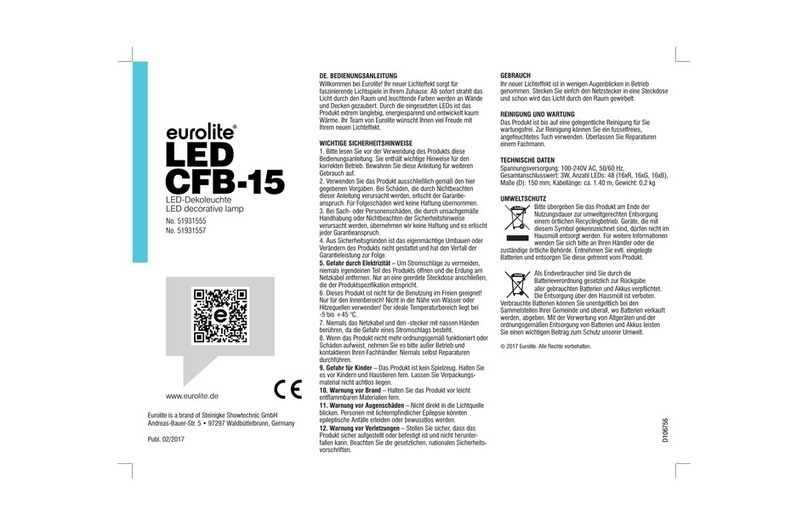Allmand MAXI-LITE AS3000 User manual

MAXI-LITE®
AS3000
AUSTRALIAN STANDARD
OPERATOR’S
MANUAL
ALLMAND BROTHERS INC.
P.O. BOX 888
HOLDREGE, NE 68949
PHONE: (308) 995- 4495, 1- 800- 562- 1373
ALLMAND FAX: (308) 995– 5887
ALLMAND PARTS DEPT. FAX : (308) 995– 4883
WWW.allmand.com
PART NO. 103565 REVISED: JANUARY 2012
Not for Reproduction

RECORD IMPORTANT INFORMATION
2
Recording the equipment information will help, when placing an order for replacement parts and/ or
decals.
Company Equipment No:
Unit model No:
Unit Vin:
Engine Model No: Serial No:
Generator Model No: Serial No:
Accessories:
Not for Reproduction

3
INTRODUCTION 6
ABOUT THIS MANUAL 6
SAFETY 7-11
SAFETY DEFINITIONS 7
SAFETY PRECAUTIONS 7
SAFETY LABELS 11
TRAILERING, TRANSPORTING AND LIFTING 12-19
PREPARING THE UNIT FOR DELIVERY OR RENTAL 12
CHECK LIST 12
BEFORE TRAILERING/ TRANSPORTING 13
SHUTDOWN-PREPARE FOR TRAILERING 13
TOWER LIGHTS-STOWAGE FOR TRAILERING—VERTICAL 14
TOWER LIGHTS-STOWAGE FOR TRAILERING—LAYDOWN 15
TOWER LIGHTS-REMOVAL FOR TRAILERING/TRANSPORTING (OPTIONAL) 16
TRAILER/TOWING 16
TRAILER COMPONENT IDENTIFICATION 16
TOWING VEHICLE AND HITCH CONSIDERATIONS 17-18
LIFTING THE LIGHT TOWER 18
TRANSPORTING ON A TRAILER 19
GENERAL SERVICE INFORMATION 20-27
EQUIPMENT IDENTIFICATION-VERTICAL 20
EQUIPMENT IDENTIFICATION-LAYDOWN 21
MODELS AND SERIAL NUMBERS 22
TRAILER 22
TABLE OF CONTENTS
GENERATOR 22
ENGINE 22
OVERALL DIMENSIONS 23
SPECIFICATIONS (STANDARD AND OPTIONAL) 22
TRAILER 24
LIGHT TOWER-VERTICAL 24
LIGHT TOWER-LAYDOWN 24
Not for Reproduction

4
TOWER LIGHTS 25
GENERATOR 25
CAT C1.1 26
OPTIONAL ACCESSORY EQUIPMENT 27
OPERATION 28-38
PRE-OPERATION SETUP 28
WORK SITE CONSIDERATIONS 28
PRE-OPERATION CHECK LIST 28
LEVELING AND STABILIZING THE TRAILER 29
INSTALLING THE GROUND ROD 30
ENGINE OPERATION 31
PRE-START CHECKS 31
ENGINE CONTROL PANELS 31
STARTING THE ENGINE 31
STOPPING THE ENGINE 31
EMERGENCY STOP SWITCH 32
BATTERY DISCONNECT SWITCH 32
AUTOMATIC ENGINE SHUTDOWN SYSTEM 32
TOWER AND LIGHT OPERATION-VERTICAL 32
TOWER AND LIGHT OPERATION-LAYDOWN 32
LIGHTBAR AND LIGHT FIXTURE ADJUSTMENT-VERTICAL 33
LIGHTBAR AND LIGHT FIXTURE ADJUSTMENT-LAYDOWN 34
RAISING AND LOWERING THE LIGHT TOWER-VERTICAL 34-35
RAISING AND LOWERING THE LIGHT TOWER-MANUAL LAYDOWN 35-36
RAISING AND LOWERING THE LIGHT TOWER-ELECRIC LAYDOWN 36-37
ELECTRIC WINCH AUXILLARY HANDLE 37
LIGHT CONTROL PANEL 38
SHUTDOWN PROCEDURE 38
SHUTDOWN 38
MAINTENANCE 39-44
TABLE OF CONTENTS
Not for Reproduction

5
ENGINE 39
CHANGING AND ADDING ENGINE OIL 39
ENGINE FILTERS 39
ELECTRICAL SYSTEM 39
BALLAST PANEL 39-40
HYDRAULIC PUMP 40
HYDRAULIC OIL SPECIFICATIONS 40
ADDING HYDRAULIC OIL 40
PRIMING THE HYDRAULIC PUMP 40
LIGHT TOWER AND LAMPS 41
CHANGING LAMPS 41
TRAILER 41
FRAME 41
GREASE POINTS 42
TRAILER WHEELS AND TIRES 42
WHEEL BREARINGS 42-43
TRAILER LIGHTING 43
LONG-TERM STORAGE 43
CLEANING 44
CLEANING AND DRAINING THE TRAILER BILGE 44
TROUBLESHOOTING 45
TROUBLESHOOTING CHART 45
MAINTENANCE RECORD 46
WIRE SCHEMATICS 47-50
CAT C1.1 ENGINE 47
60Hz BALLAST AND GENERATOR 16/8 CORD 48
50Hz BALLAST AND GENERATOR 16/8 CORD 49
HYDRAULIC PUMP 50
TAILLIGHTS 51
WARRANTY 52
TABLE OF CONTENTS
Not for Reproduction

6
INTRODUCTION
ABOUT THIS MANUAL
TAKE TIME TO READ THIS MANUAL THOROUGHLY
This instruction manual provides necessary instructions for the MAXI-LITE AS3000 light tower.
The information found in this manual is in effect at the time of printing. Allmand Bros Inc. may
change contents without notice and without incurring obligation.
Any reference in this manual to left or right shall be determined by looking at the trailer from the rear.
If you are uncertain about any of the information in the manual, contact Allmand service department
at 1-800-562-1373, for clarification.
Not for Reproduction

7
SAFETY
SAFETY DEFINITIONS
Safety statements are one of the primary ways
to call your attention to potential hazards. Fol-
low the precautions listed throughout the man-
ual before operation, during operation and dur-
ing periodic maintenance procedures for your
safety, the safety of others and to protect the
performance of equipment. Keep the decals
from becoming dirty or torn and replace them if
they are lost or damaged. Also, if a part needs
to be replaced that has a decal attached to it,
make sure to order the new part and decal at
the same time.
Indicates a hazardous situation which, if not
avoided, will result in death or serious injury.
Indicates a hazardous situation which, if not
avoided, could result in death or serious injury.
Indicates a hazardous situation which, if not
avoided, could result in minor or serious injury.
This safety alert symbol appears
with most safety statements. It
means attention,
become alert, your safety is in-
volved! Read and abide by the mes-
sage that follows the safety alert
symbol.
Indicates a situation which can cause damage
to the equipment, personal property and/or the
environment, or cause the equipment to oper-
ate improperly.
NOTE: provides key information to make pro-
cedures easier or clearer.
SAFETY PRECAUTIONS
There is not substitute for common sense and
careful practices. This information contains gen-
eral safety precautions and guidelines that must
be followed to reduce risk to personal safety.
Special safety precautions are listed in specific
procedures. Read and understand all of the
safety precautions before operating or perform-
ing repairs or maintenance. This safety section
cannot cover every situation that may occur that
is incidental to the use of the equipment.
If you are uncertain about any of the information
in the manual, contact Allmand service depart-
ment at 1-800-562-1373, for clarification.
Not for Reproduction

8
The safety statements that follow have
DANGER level hazards.
The safety statements that follow have
WARNING level hazards.
Always check overhead wires
and obstructions before raising
or lowering the light tower.
Allow 10.6 m (35 feet) of
clearance.
ELECTROCUTION HAZARD
High voltage is present when engine is
running. Never attempt to service electrical
components while engine is running.
Do not operate the light tower if the
insulation on the electrical cord or other
electrical wiring is cut or worn or if bare
wires are exposed. Repair or replace
damaged wiring before starting the engine.
Read and understand this Operator’s
Manual, the Engine Operator’s Manual
before operating or servicing the light tower
to ensure that safe operating practices and
maintenance procedures are followed.
UNSAFE OPERATION HAZARD
Never carry riders on the equipment
FALL HAZARD
MODIFICATION HAZARD
Never modify the equipment without written
consent of the manufacturer. Any
modification can effect the safe operation of
the equipment.
EXPOSURE HAZARD
Always wear personal protec-
tive equipment, including
appropriate clothing, gloves,
work shoes, and eye and
hearing protection, as required
by the task at hand.
ROLLOVER HAZARD
Do not raise, lower or use light tower unless
all outriggers and jacks are positioned on
firm ground.
Never move or reposition the light tower
while the light tower is extended in the
vertical position.
EXPLOSION HAZARD
While the engine is running or
the battery is charging,
hydrogen gas is being
produced and can be easily
Ignited. Keep the area around
the battery well ventilated and
keep sparks, open flame and
any other form of ignition out
of the area.
Always disconnect the negative (-) battery
cable before servicing equipment.
Only use the starting procedure as
described in the Engine Operator’s Manual
to start the engine.
Never charge a frozen battery. Always
slowly warm the battery to room
temperature before charging.
Never permit anyone to install or operate the
equipment without proper training.
Safety signs and decals are additional
reminders for safe operating and
maintenance techniques.
SAFETY
Not for Reproduction

9
SAFETY
FIRE AND EXPLOSION HAZARD
Diesel fuel is flammable and explosive
under certain conditions.
Never use a shop rag to catch the fuel.
Wipe up all spills immediately.
Never refuel with the engine running.
Store any containers containing fuel in a
well ventilated area, away from any
combustibles or sources of ignition.
The safety statements that follow have
WARNING level hazards.
EXHAUST HAZARD
All internal combustion engines
create carbon monoxide gas
during operation and special
precautions are required to avoid
carbon monoxide poisoning.
Never block windows, vents or other means
of ventilation if the equipment is operating in
an enclosed area.
Always ensure that all connections are
tightened to specifications after repair is
made to the exhaust system.
ENTANGLEMENT / SEVER
HAZARD
Always stop the engine before be-
ginning service.
If the engine must be service while it is
operating, remove all jewelry, tie back long
hair and keep hands, other body parts and
clothing away from moving/rotating parts.
Verify that all guards and covers are
attached properly to the equipment before
starting the engine. Do not start the engine if
any guards are or covers are not properly
installed on the equipment.
Attach a “Do Not Operate” tag near the key
switch while performing maintenance on the
equipment.
ALCOHOL AND DRUG HAZARD
Never operate the light tower while
under the influence of alcohol or
drugs, or when ill.
PIERCING HAZARD
Avoid skin contact with high
pressure hydraulic fluid or
diesel fuel spray caused by a
hydraulic or fuel system leak
such as a broken hydraulic
hose or fuel injection line. High
pressure hydraulic fluid or fuel
can penetrate your skin and
result in serious injury. If you
are exposed to high pressure
hydraulic fluid or fuel spray,
obtain prompt medical
treatment.
Never check for a hydraulic fluid or fuel leak
with your hands. Always use a piece of
wood or cardboard.
Not for Reproduction

10
SAFETY
FLYING OBJECT HAZARD
Always wear eye protection when
cleaning the equipment with
compressed air or high pressure
water. Dust, flying debris,
compressed air, pressurized
water or steam may injure your
eyes.
COOLANT HAZARD
Wear eye protection and rubber
gloves when handling engine
coolant. If contact with the eyes or
skin should occur, flush eyes and
wash immediately with clean
water.
BURN HAZARD
light fixtures and some of the
engine surfaces become very hot
during operation and shortly after
shutdown.
Keep hands and other body parts away from
hot engine surfaces.
Handle hot components, such as light
fixtures, with heat resistant gloves.
The safety messages that follow have
CAUTION level hazards.
TOOL HAZARD
Always use tools appropriate for the task at
hand and use the correct size tool for
loosening or tightening equipment parts.
SLIP HAZARD
Immediately clean up any spilled liquid on
the shop floor.
Clean up accumulated dirt and debris on the
shop floor at the end of each shift.
The safety statements that follow have
NOTICE level .
Any part which is found defective as a result
of inspection or any part whose measured
value does not satisfy the standard or limit
MUST be replaced.
Always tighten components to the specified
torque. Loose parts can cause equipment
damage or cause it to operate improperly.
Only use replacement parts specified.
Other replacement parts may effect
warranty coverage.
Clean all accumulated dirt and debris away
from the body of the equipment and its
components before you inspect the
equipment or perform preventative
maintenance procedures or repairs. Oper-
ating equipment with accumulated dirt and
debris will cause premature wear of
equipment components.
Never dispose of hazardous materials by
dumping them into a sewer, on the ground,
or into groundwater or waterways.
Retrieve any tools or parts that may have
dropped inside of the equipment to avoid
improper equipment operation.
Follow the guidelines of the EPA
or other governmental agencies
for the proper disposal of
hazardous materials such as
engine oil, diesel fuel and engine
coolant.
If any alert indicator illuminates during
equipment operation, stop the engine
immediately. Determine the cause and re-
pair the problem before continuing to oper-
ate the equipment.
Not for Reproduction

11
SAFETY
Refer to these representations of the safety
warning decals used on the MAXI-LITE
AS3000 light tower to insure correct ordering if
replacement becomes necessary.
SAFETY LABELS
Not for Reproduction

12
TRAILERING, TRANSPORTING AND LIFTING
PREPARING THE UNIT FOR
DELIVERY OR RENTAL
The MAXI-LITE AS3000 light tower should be
operated properly and maintained properly for
maximum service life. Never deliver or put ma-
chine into service with known defects or miss-
ing instructions or decals. Always instruct the
customer in proper operation and safety proce-
dures as described in this Operator’s Manual.
Always provide the manual with the equipment
for proper and safe operation.
CHECK LIST
Visually inspect the equipment to ensure
that all instructions and decals are in place
and legible.
Inspect the light tower locking bar latch
assembly which locks the light tower in the
vertical position for proper operation.
Check the hitch assembly and safety chains.
Check the outriggers and jacks to make
sure they operate properly.
Inspect the light assemblies for damage and
test for proper operation.
Inspect the electrical wiring for signs of
damage.
Check ground rod cable and the ground lug.
Make sure they are clean, undamaged and
functional.
Inspect tires to insure good condition and
proper inflation.
Check engine oil, fuel, engine coolant levels
and hydraulic fluid levels, if equipped.
Check to make sure the Light Tower
Operator’s Manual, Engine Operator’s Man-
ual and the Generator Operator’s Manual
are with the equipment.
Inspect the machine physically for damage
and repair if necessary.
ALWAYS READ AND
UNDERSTAND THE
INSTRUCTIONS FIRST.
After completing the pre-operation check list,
operate the tower through a complete operation
cycle, following the operating instructions in the
MAXI-LITE AS3000 Operator’s Manual.
Not for Reproduction

13
TRAILERING, TRANSPORTING AND LIFTING
BEFORE TRAILERING OR TRANS-
PORTING
Before trailering, transporting or lifting, read
Safety on page 7.
Perform the following before trailering /
transporting:
Lower the light tower and shut down the
tower lights and the engine; See Shutdown-
prepare for trailering on page 13.
Visually inspect the trailer and equipment for
damage. Repair or replace any components
as needed before trailering.
SHUTDOWN - Prepare for trailering
1. With the tower lights off, lower the light
tower to the full DOWN position; See
Raising and lowering the light tower on page
34-37.
2. Turn the engine off . Refer to your Engine
Operator’s Manual for stopping procedure.
3. Adjust the light bar and light fixtures for
trailering; See Tower Lights-Stowage for
trailering on page 16.
7. Raise each outrigger stabilizer jack and
rotate into trailering position (horizontal with
outrigger bar).
8. Retract each outrigger bar and secure in the
stowed position with latch pin.
4. Secure the light cords into the hook on the
rear tower support.(Laydown Tower Only)
5. Disconnect the ground rod cable rod the
ground lug. Remove the ground rod from the
earth and clean and secure the ground rod
and cable in the trailer.
6. Close, secure and lock all compartment
doors.
Check the trailer lights for proper operation
Inspect the tires to insure good condition
and proper inflation.
Inspect trailer springs and undercarriage for
damage or loose parts.
Check the hitch assembly and safety chains.
Ensure the outriggers and jacks are properly
stowed.
Ensure the ground rod and cable are
disconnected and properly stowed.
Clean any spills from inside the trailer bilge
area around the outside of the trailer; they
may have occurred during operation.
Ensure all compartment doors are closed
and securely locked.
Not for Reproduction

14
TRAILERING, TRANSPORTING AND LIFTING
VERTICAL TOWER LIGHTS - Stowage
for Trailering
The light bar and fixtures must be stowed
before trailering or transporting.
1. Ensure lights are off and tower is lowered to
the full DOWN position; See Raising and
Lowering the Light Tower on page 34-37.
2. Release the light bar park pin by pulling the
ring and turning it 90° so that the pin
remains in the retracted position.
3. Rotate the light bar into the trailering/ trans-
porting park position (inline with the trailer)
and engage the park pin by twisting the park
pin ring until the plunger is released and the
pin engages and locks into the hole in the
light bar.
4. Reposition the light fixtures for trailering/
transporting by pulling them down into the
lowest position and face the fixtures toward
the center of the trailer. (See Right )
If lights are to be removed for trailering/ trans-
porting, See Tower Lights - Removal for Trailer-
ing/ Transporting on page 16.
Not for Reproduction

15
TRAILERING, TRANSPORTING AND LIFTING
LAYDOWN TOWER LIGHTS - Stowage
for Trailering
The light bar and fixtures must be stowed
before trailering or transporting.
1. Ensure lights are off and tower is lowered to
the full DOWN position: See Raising and
Lowering the Light Tower on page 34-37.
2. Rotate the light bar into the trailering/
transporting park position (inline with the
front of the trailer) and tighten the tower lock
knob.
3. Lower the tower into the rear tower support
and engage tower lock.
4. Reposition the light fixtures for trailering/
transporting by facing the fixtures toward the
mast (See right)
If lights are to be removed for trailering/ trans-
porting, See Tower Lights -Removal for trailer-
ing/ transporting (optional) on page 18.
Not for Reproduction

16
TRAILERING, TRANSPORTING AND LIFTING
TRAILERING / TOWING
Before trailering / towing the light tower trailer,
read Before Trailering / Transporting on page
13 and read Safety on page 7.
TOWER LIGHTS - Removal for Trailer-
ing/ Transporting (optional)
Your light tower may be equipped with lights
that can be removed for trailering/ transporting
or for theft protection.
Tongue Jack
Ball Hitch Coupler
Safety Chains
Trailer Component Identification
1. Ensure lights are off and tower is lowered to
the full DOWN position; See Raising and
Lowering the light tower on page 35-37 .
2. Disconnect the electrical cord from each
light fixture.
3. While supporting the light fixture, remove
the nut and washer for each assembly
fastening the main light fixture bracket to the
light bar.
4. Store each light fixture to avoid any damage
during transport
Park Brake
Not for Reproduction

17
TRAILERING, TRANSPORTING AND LIFTING
Towing Vehicle and Hitch Considera-
tions
Connecting the Trailer Hitch Coupler
and Lights
The trailer is equipped with a trailer coupler for
a 50mm (2 inch) ball hitch.
The towing vehicle must be able to safely pull
the full trailer load. Never pull a trailer load that
exceeds the vehicle’s towing capacity. The ve-
hicle must have a towing hitch that is capable of
safely handling the trailer load and tongue
weight of the trailer.
Before trailering, always check your vehicle
owners manual for maximum towing/ trailering
load specifications and maximum gross vehicle
weight specifications that include the fully
loaded trailer.
The trailer’s safety chains prevent the trailer
from completely detaching from the vehicle
when underway. In the event the trailer sepa-
rates from the vehicles hitch and ball.
1. Connect the trailer coupler to the tow vehi-
cle’s hitch and ball. Make sure the coupler is
securely attached to the tow vehicle’s hitch.
Hitch and Coupler
VEHICLE HITCH
AND BALL
LATCH AND
RELEASE
LEVER
PARK BRAKE
TRAILER
COUPLER
SOCKET
Not for Reproduction

18
4. Ensure there is adequate slack in the
harness to prevent binding or disconnection
when turning.
5. Before trailering, check all lights for proper
operation.
2. Connect the safety chains to the vehicle’s
hitch frame and crisscross the chains under
the trailer tongue to prevent the tongue from
dropping to the road if the trailer separates
from the hitch ball. Rig the chains as tight as
possible with enough slack to permit free
turning.
3. Connect the 7-pin light connector from the
trailers harness to the vehicles harness.
TRAILERING, TRANSPORTING AND LIFTING
7-pin Trailer Light
Harness Connector
Trailer Safety
Chains
LIFTING THE LIGHT TOWER
The approximate fully loaded weight of the light
tower and trailer is:
Vertical tower - 1,271.4 kg (2,803lbs)
Laydown tower - 1,173.9 kg (2,588 lbs)
The MAXI-LITE AS3000 light tower is equipped
with top forklift pockets and a lifting eye for lift-
ing or hoisting.
PROPER CHAIN CONNECTION
BOTTOM VIEW OF HITCH AND
COUPLER
Not for Reproduction

19
TRAILERING, TRANSPORTING AND LIFTING
LIFTING ATTACHMENT POINTS - Vertical
Tower
LIFTING ATTACHMENT POINTS - Laydown
Tower
LIFTING EYE
FORKLIFT POCKETS
TRANSPORTING ON A TRAILER
When transporting the light tower trailer on a
truck or a trailer, always secure the unit using
properly rated tie-down chains or straps con-
necting the light tower frame using tie-down
loops to the towing trailer. The operator of the
towing vehicle is responsible for securing the
load properly.
LIFTING EYE
FORKLIFT POCKETS
Not for Reproduction

20
GENERAL SERVICE INFORMATION
EQUIPMENT IDENTIFICATION– VERTICAL TOWER
LIFTING BAR
LIGHT BAR
LAMP ASSEMBLY
LEFT FUEL
TANK AND
CONTROL
ACCESS
DOOR
HYDRAULIC LIGHT
TOWER
FRONT STABI-
LIZER JACK
FRONT OUTRIGGER
TRAILER TONGUE JACK
COUPLER
PARK
BRAKE
STEP PLATE
(Hydraulic
Only)
SAFTEY CHAINS
BALLAST ACCESS COVER PANEL
BATTERY DISCONNECT
SWITCH
EMERGENCY STOP BUTTON
Not for Reproduction
Table of contents
Other Allmand Work Light manuals
Popular Work Light manuals by other brands
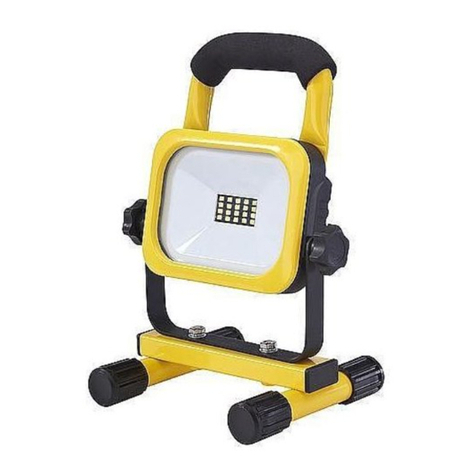
Strend Pro
Strend Pro LY3271H-1 instruction manual

Aukey
Aukey LT-ST21 user manual
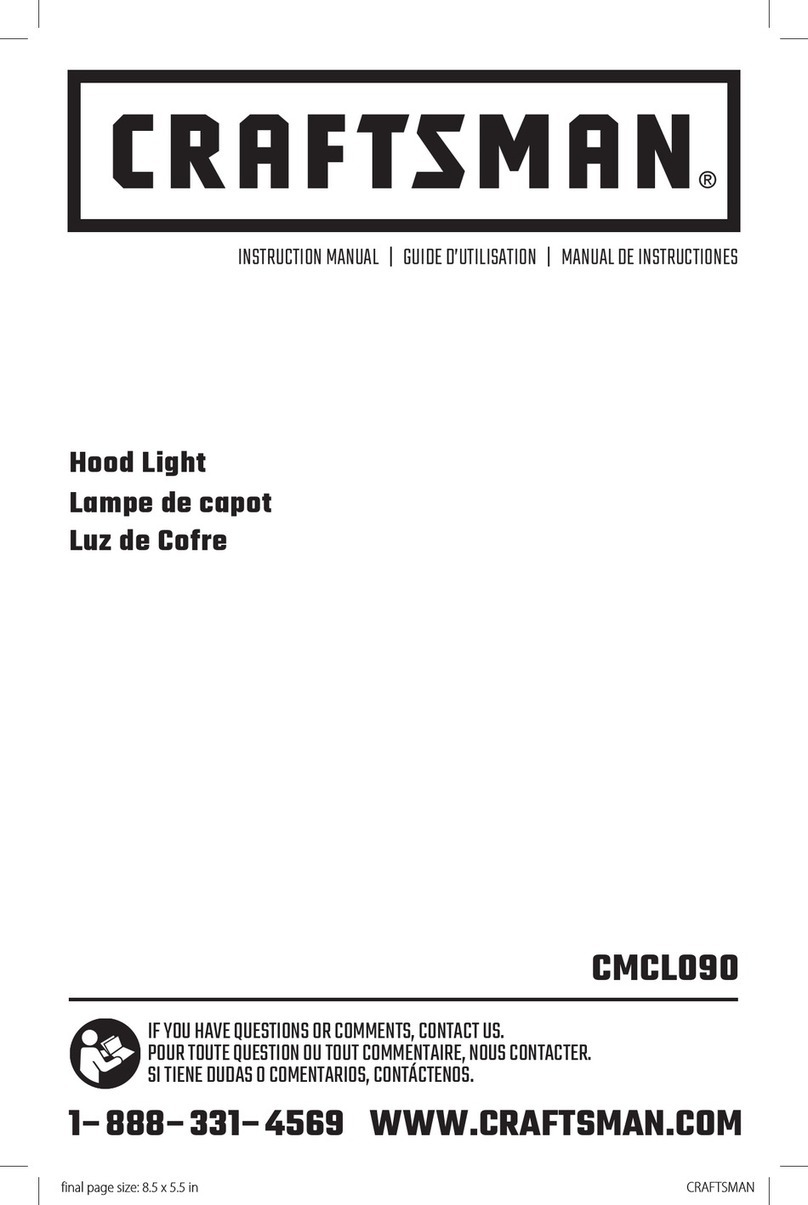
Craftsman
Craftsman CMCL090 instruction manual
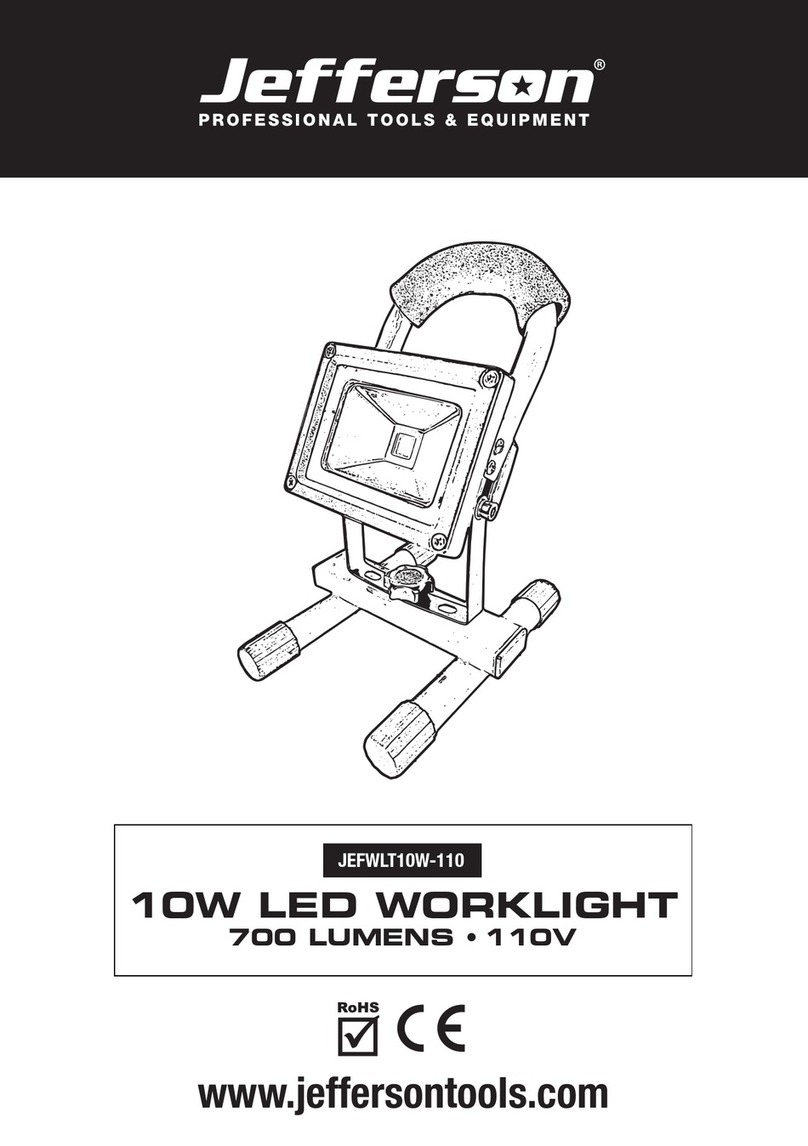
Jefferson Professional Tools & Equipment
Jefferson Professional Tools & Equipment JEFWLT10W-110 manual
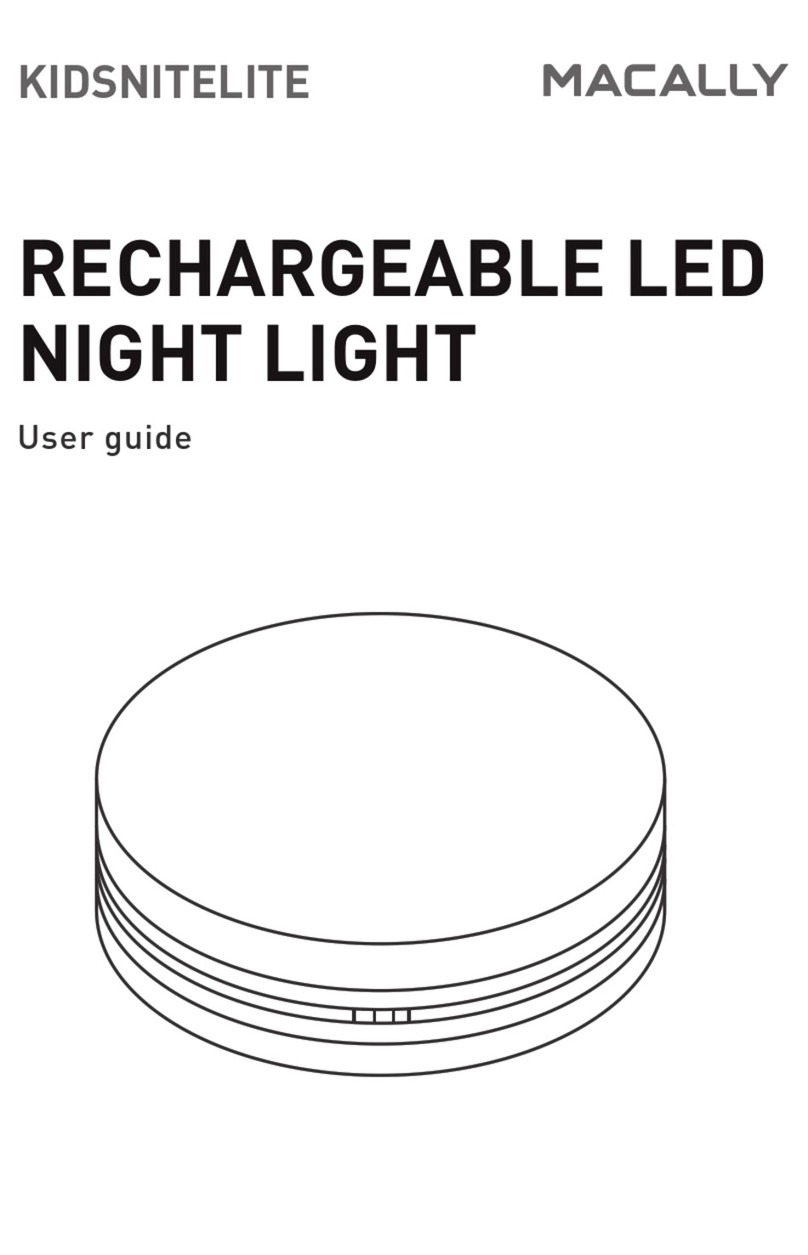
Macally
Macally KIDSNITELITE user guide
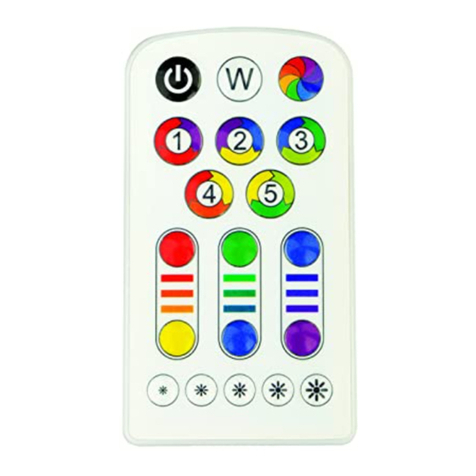
jedi LIGHTING
jedi LIGHTING 3in1 GLAM User instructions
